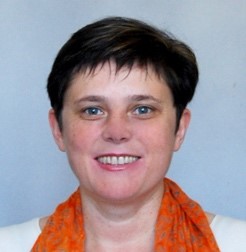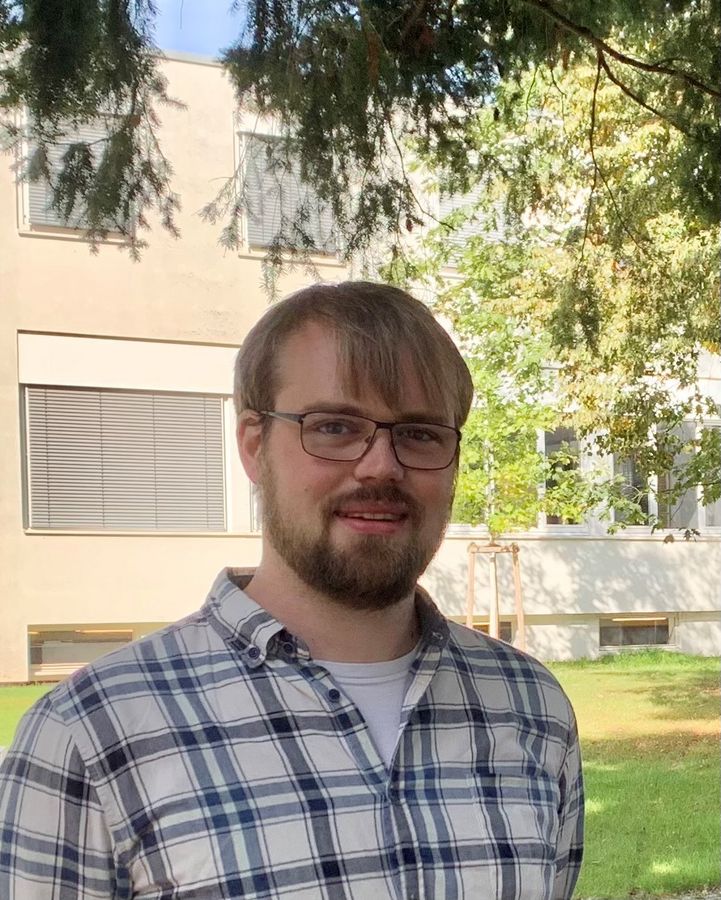This page provides information about the previous sessions of the Leipzig Spin Resonance Colloquium in spring 2022.
Electric, magnetic and acoustic resonance with single electron and nuclear spins in silicon
Donor atoms in silicon are a versatile platform for experiments in quantum information processing, as well as quantum foundations. The electron [1] and nuclear [2] spin of a 31P donor were the first qubits demonstrated in silicon, and went on to become among of the most coherent qubits in the solid state, with coherence times exceeding 30 seconds [3], and quantum gate fidelities approaching 99.99% [4].
While magnetic resonance is the standard method to achieve coherent spin control, in recent years we have demonstrated or predicted that similar control can be achieved using oscillating electric fields, or even acoustic waves.
Using magnetic resonance, we have demonstrated an exchange-based 2-qubit CROT gate for electron spins [5], in a device where we implanted a high dose of 31P donors. Future experiments will focus on using deterministic, counted single-ion implantation, for which we have recently demonstrated the capability to detect an individual ion with 99.85% confidence [6]. With nuclear spins, we have achieved the landmark result of universal 1- and 2-qubit logic operations with >99% fidelity, and prepared a 3-qubit GHZ entangled state with 92.5% fidelity [7]. We have also demonstrated the coherent electrical control of an electron-nuclear flip-flop qubit [8], which will greatly facilitate the integration of single-atom qubits in nanoelectronic devices.
Heavier donors possess a high nuclear spin quantum number and a nonzero electric quadrupole moment, which can be used to study quantum chaos in a single quantum system [9]. Chaotic dynamics must be understood and controlled for the correct operation of quantum computers and quantum simulators [10]. In the process of operating a single spin-7/2 123Sb nucleus, we (re)discovered the phenomenon of nuclear electric resonance, and applied it for the first time to a single nuclear spin [11].
Finally, the application of local lattice strain is predicted to enable nuclear acoustic resonance [12] of quadrupolar nuclei such as 123Sb, and to provide a unique atomic-scale probe of local lattice strain in silicon quantum electronic devices.
[1] J. Pla et al., Nature 489, 541 (2012)
[2] J. Pla et al., Nature 496, 334 (2013)
[3] J. Muhonen et al., Nature Nanotechnology 9, 986 (2014)
[4] J. Muhonen et al., J. Phys: Condens. Matter 27, 154205 (2015)
[5] M. Madzik et al., Nature Communications 12, 181 (2021)
[6] A. Jakob et al., Advanced Materials, doi:10.1002/adma.202103235 (2021)
[7] M. Madzik et al., Nature 601, 348 (2022)
[8] R. Savytskyy et al., arXiv:2022.04438 (2022)
[9] V. Mourik et al., Physical Review E 98, 042206 (2018)
[10] L. Sieberer et al., NPJ Quantum Information 5:78 (2019)
[11] S. Asaad et al., Nature 579, 205 (2020)
[12] L. O’Neill et al., Applied Physics Letters 119, 174001 (2021)
Magnetic Resonance of Porous Media: Spin Physics and Applications
Porous material is ubiquitous in nature and human life: rocks, soil, wood, food, and biological tissues are good examples. They are intrinsically multi-phasic, and their microstructure is critical for their functions. In recent years, NMR/MRI has become an important technique for characterization of a variety of porous media by investigating the diffusion and relaxation of fluid molecules in the pore space. These techniques have found broad applications in petroleum/groundwater exploration, material sciences, and medical imaging. This talk will discuss measurement techniques of the material porosity, and the heterogeneity. In particular, we will highlight 2-dimensional correlational methods and the associated spin physics that are crucial for complex natural materials and biological tissues. If time permits, we will also highlight the novel hardware miniaturization using ASIC.
Profile
Yi-Qiao Song received the B.S. degree from Peking University in 1985 and the Ph.D. degree in physics from Northwestern University in 1991. He was a Miller Research Fellow at University of California, Berkeley, where he studied NMR/MRI of hyperpolarized gasses. In 1997-2020, he worked at Schlumberger-Doll Research to develop NMR/MRI technologies and applications for the study of porous media and well logging. Currently, he is a Senior Scientist at Harvard University and research staff in Massachusetts General Hospital. Dr. Song is a Fellow of the American Physical Society and International Society of Magnetic Resonance, Associate editor of Journal of Magnetic Resonance and Petroleum Sciences, member of the editorial boards at Magnetic Resonance Letters and Chinese Journal of Magnetic Resonance. He is also the chair of the Magnetic Resonance in Porous Media Division of Groupement Ampere. He has published over 160 papers in peer-reviewed scientific journals and holds over 60 patents. His research focuses on developing NMR/MRI/NQR methodologies and instrumentation to study porous media, complex fluids and biological tissues.
For more information please visit the Matysik working group.
Enabling In-Cell NMR with Pulsed DNP, Electron Decoupling, MAS Spheres and Compact 30 Tesla Magnets
Proteins and drugs that function in cells, are best studied in cells. It is far better to investigate biological structure in a cellular context, with all of the diverse proteins, lipids, salts, and small molecules present that ultimately govern cellular function and regulation, also present. As far as atomic structural characterization of such biological targets goes, NMR is by far the best (if not only) suitable technique. Whereas resolution within intact human cells can be readily achieved using 19F, 13C, and 15N isotopic labeling and enrichment, NMR sensitivity is severely challenged within a cellular environment. The reason for bad sensitivity is the low amount of spins present in such target-dilute samples. Moreover, typical relevant cellular protein and compound concentrations are on the nanomolar to micromolar scale. All we need to do to catapult structural biology into an exciting in-cell regime, is increase NMR sensitivity by four or five orders of magnitude. I will show how we will accomplish such sensitivity gains through 1) Time domain dynamic nuclear polarization > 28 Tesla; 2) Electron spin decoupling and chirped microwave pulses; 3) Cryogenic magic angle spinning spheres below 6 Kelvin; 4) Compact high temperature superconducting magnets >28 Tesla and 5) Frequency agile gyrotrons.
Nanoscale NMR enabled by diamond spin qubits
A particularly interesting application of diamond based quantum sensing is the detection of nuclear magnetic resonance on nanometer scales, including the detection of individual nuclear spins or small ensembles of external nuclear spins. Single nitrogen vacancy (NV) color centers in diamond currently have sufficient sensitivity for detecting single external nuclear spins and resolve their position within a few angstroms. The ability to bring the sensor close to biomolecules by implantation of single NV centers and attachment of proteins to the surface of diamond enabled the first proof of principle demonstration of proteins labeled by paramagnetic markers and label-free detection of the signal from a single protein. Single-molecule nuclear magnetic resonance (NMR) experiments open the way towards unraveling dynamics and structure of single biomolecules. However, for that purpose, NV magnetometers must reach spectral resolutions comparable to that of conventional solution state NMR. New techniques for this purpose will be discussed. Most of mentioned above results obtained so far with diamond centers are based on optical detection of single NV color centers. We will also discuss applications of NV centres for hyperpolarisation of internal and external nuclear spins.
Profile
Fedor Jelezko is a director of the Institute of Quantum Optics and director of the Center for Integrated Quantum Science and Technology (IQST) at Ulm University. He studied in Minsk (Belarus) and received his Ph.D. in 1998. After finishing the habilitation in 2010 at Stuttgart University he was appointed as a professor of experimental physics in Ulm in 2011. His research interests are at the intersection of fundamental quantum physics and application of quantum technologies for information processing, communication, sensing, and imaging.
Fluorine MAS NMR and DNP of Molecules Small and Large: Spin it Fast!
Recent methodological advances in 19F MAS NMR and DNP will be discussed, with applications in small-molecule pharmaceuticals, microcrystalline proteins and large biological assemblies. It will be demonstrated that high MAS frequencies (40-110 kHz) are advantageous for the homo- and heteronuclear correlation experiments and the measurement of accurate interfluorine distances. With remarkably high, up to 100-fold, signal enhancements in 19F DNP MAS NMR spectra, observed in HIV-1 capsid protein assemblies, it was possible to record 2D 19F-13C HETCOR spectra. These spectra contain long-range intra- and intermolecular correlations, which are not easily accessible in conventional experiments without DNP.
Profile
Tatyana Polenova is Professor of Chemistry and Biochemistry at the University of Delaware. She received her undergraduate degree (diploma with excellence) from Moscow State University in 1992. She received her Ph.D. degree from Columbia University in 1997, working in the laboratory of Professor Ann McDermott. After a postdoctoral position at Columbia, in 1999 she joined the faculty of City University of New York-Hunter College, and in 2003 relocated to the University of Delaware. Her research focuses on solid-state NMR methods development and applications to understanding structure, dynamics and function of biological systems, including viral and cytoskeleton protein assemblies. Polenova is a Fellow of the International Society of Magnetic Resonance. She is the Editor in Chief of Journal of Magnetic Resonance, an Associate Developmental Editor of Journal of Structural Biology and Journal of Structural Biology X, and an Associate Editor of Journal of Biomolecular NMR.
Spontaneous emission in nuclear magnetic resonance – The parahydrogen fueled NMR RASER
Conventional NMR and MRI rely on stimulated emission. First, a sample is excited with a radiofrequency (rf) pulse and consecutively, the response of the system is detected. In this colloquium, I will focus on an alternative approach to NMR. Spontaneous emission of radiowaves is possible in form of a RASER (radiowave amplification by stimulated emission of radiation), a brother of the LASER. Just like for a LASER, the RASER requires pumping, which is achieved by parahydrogen hyperpolarization. In this lecture, I will introduce the basic operating principles of a RASER, the parahydrogen-based pumping mechanism and applications of a RASER in NMR. The applications range from high-precision NMR spectroscopy with sub-mHz linewidth to nonlinear phenomena such as period doubling, collapse, and chaos. Finally, RASER MRI is introduced, where magnetic resonance images are generated without rf-irradiation but relying on self-organization instead.
Profile
The biographical information, can be found on the KIT Web-Page
Structural dynamics of hsp90 – a playground for EPR spectroscopy
Hsp90 is a molecular chaperone important in all organisms facilitating the folding and maturation of proteins called clients. These participate in many cellular processes such as DNA repair and neurodegeneration, making Hsp90 a central modulator of the cell. Hsp90’s function is finely-tuned by other proteins called co-chaperones. Hsp90 performs its chaperoning roles by utilizing ATP together with Mg(II) as co-factor of the ATP hydrolysis [1]. The chaperone is homo-dimeric and each monomer is consisted of three successive domains, the NTD where the ATPase site is; the MD important for ATP hydrolysis and binding of clients; and the CTD responsible for dimerization of the two monomers [1].
We studied yeast Hsp90 (yHsp90) using Electron Paramagnetic Resonance (EPR) techniques whci includes various spin labeling schemes using Gd(III), nitroxide (NO) and Mn(II). We, exploited the ATPase site where substituted the EPR silent Mg(II) co-factor with paramagnetic Mn(II). We used electron-electron-nuclear double resonance (ENDOR) to detect Mn-31P hyperfine interactions which revealed the hydrolysis state of Hsp90. Then we employed electron-electron double resonance (DEER) to track different conformational states. Mn(II)-Mn(II) DEER we studied the conformational dynamics of the NTDs in presence of AMP-PNP and ADP mimicking the pre- and post- hydrolysis states. We, also, performed Mn(II)-Mn(II) DEER in presence of its co-chaperone Sba1. These data identified three different closed conformations, the ‘closed’, compact’ [2] and ‘packed’ [3]. We ensured binding of Sba1 onto yHsp90 by Mn(II)-NO DEER, with the Mn(II) from the ATPase site and the NO introduced into the native cysteine of Sba1.
Using Gd(III) spin labeling on the CTD and DEER we quantitatively studied the dimerization of the CTDs for full length yHsp90 and isolated CTD. Last, we exploited the redox-stable Gd(III) labels in the CTD to ‘look’ at yHsp90 in the cell. We, therefore, introduced overexpressed, purified and Gd(III)-labeled yHsp90 in Hela cells and studied the CTD conformations in the cellular context, which were found different from the corresponding in vitro.
______________________________________________________________________________
References:
[1] C. Prodromou et al., Embo J. 19, 4383-4392 (2000).
[2] A. Giannoulis et al., Proc. Natl. Acad. Sci. U.S.A. 117, 395-404 (2020).
[3] M. M. U. Ali et al., Nature 440, 1013-1017 (2006).
Probing minority Components in Solids by NMR Spectroscopy – from Polymer Defects in weathered Microplastics to Self-Aggregation of Polymer Additives
Chemical modifications and additions to polymers dramatically change the properties of the base polymers, even if these changes occur with minuscule proportions of only a few hundred ppm. A prominent example are supramolecular polymer additives, which allow for expanding the application range of polymers. The additives are used as nucleation agents or clarifiers and improve the electret and foaming properties [1]. In an environmental context, polymer defects introduced by photooxidation govern the properties of weathered plastic particles and their interaction with natural colloidal particles and living organisms in the environment [2]. The socalled microplastic is meanwhile found in every environmental compartment with, up to now, unknown risks for the global food web. In both cases a comprehensive analysis about structure and chemical functionalities is challenging due to the small proportions. Here we show, that modern NMR techniques for signal enhancement [1,3] provide sufficient sensitivity to make progress on both aspects.
In the first part of the lecture, we focus on degradation mechanisms for microplastic particles in the environment [1]. Based on accelerated weathering studies for the common microplastic components polyethylene (PE), polypropylene (PP) and polystyrene (PS), we followed the degradation by combining multiCP NMR experiments and DNP enhanced NMR spectroscopy to probe the defect proportions with trends for molecular weight distributions, particle sizes and mechanical stress responses. The degradation is characterized by three phases. In the first stage, photooxidation decreases the chain lengths and induces oxygen-bearing, polar functionalities. Reaching chain length below the entanglement length, particle fracturing sets in, defining the second stage. Finally, due to the increasing polarity of the ever shorter polymer chains, smaller fragments start to aggregate, strongly attaching to the pool of natural matter. 129Xe NMR spectroscopy using hyperpolarized xenon gas (Figure 1) [3] additionally, allowed to show that weathered particles become porous, rendering water uptake and freezing cycles a likely scenario to enhance late degradation stages.
In the second part of the lecture, we will report on recent progress for the in-situ characterization of supramolecular additives within polymer/additive mixtures. Due to their molecular design, the additives are supposed to self-assemble into nano-aggregates when the polymer melt is cooled down. Although, detailed knowledge about the crystal packing of various additives could be assembled, proof that similarly ordered objects are formed within the polymer additive mixtures is still missing. Using 19F as spin label for selected additives, turned out to be advantageous in this respect, as excitation via 19F allows to select spectral features belonging to the additives. By combining this with DNP enhanced spectroscopic techniques, we could probe the additives in minuscule proportions and even perform 19F-19F DQ experiment to probe the additive self-assembly within the polymer matrix (Figure 2).
[1] van der Zwan, K. P.; Riedel, W.; Aussenac, F.; Reiter, C.; Kreger, K.; Schmidt, H.-W.; Risse, T.; Gutmann, T.; Senker, J. J. Phys. Chem. C 2021, 125, 7287.
[2] Meides, N.; Menzel, T.; Poetzschner, B.; Löder, M. G. J.; Mansfeld, U.; Strohriegl, P.; Altstaedt, V.; Senker, J. Environ. Sci. Technol. 2021, 55, 7930.
[3] Stäglich, R.; Kemnitzer, T. W.; Harder, M. C.; Schmutzler, A.; Meinhart, M.; Keenan, C. D.; Rössler, E. A.; Senker, J. J. Phys. Chem. A 2022, 126, 2578.
Functional brain imaging: How spins make thinking visible
Functional Magnetic Resonance Imaging (fMRI) is a very popular method in neurosciences to detect “brain activity” noninvasively in the living human brain. On a cellular level, brain activity can be defined as a communication between neurons via action potentials along interconnecting axons and synapses. Electrophysiology can directly measure these action potentials while magnetic resonance imaging is (currently) not able to detect these tiny potential changes (via induced magnetic fields). Instead, fMRI is based on an indirect mechanism, the so-called neurovascular coupling, that relates changes of hemodynamics such as blood oxygenation, volume and flow to neuronal activation. In this lecture I will describe several mechanisms of MR signal formation within a neurovascular network that leads to the so-called blood oxygenation level dependent (BOLD) effect, and which physiological and acquisition-related parameters influence this BOLD signal.
Profile
The biographical information, can be found on the MPI Web-Page
Optimizing and visualizing the effects of NMR pulse sequences
Analytical and numerical tools of optimal control theory make it possible to explore the performance limits of pulse sequences. In the last decade, these tools not only provided pulse sequences of unprecedented quality and capabilities, but also new analytical and geometrical insight and a deeper understanding of pulse optimization problems [1,2,3]. After the initial focus on the performance limits of individual pulses, e.g. for excitation or refocusing, the perspective has been more and more widened to the design of cooperative broadband pulse sequences, relaxation dispersion and decoupling experiments.
Advanced intuitive and highly interactive visualization techniques, such as the DROPS representation [4,5] (implemented in the SpinDrops app [6]), provide a powerful approach to interactively and intuitively explore the dynamics of coupled spin systems in teaching and research. In addition to the visualization of magnetic resonance experiments, the approach is also very promising for teaching fundamental concepts of quantum mechanics and quantum computation, such as superposition, entanglement and projective measurements with wave function collapse.
[1] S. J. Glaser et al, Eur. Phys. J. D 69, 279/1-24 (2015).
[2] C. Koch et al., arXiv:2205.12110 [quant-ph] (2022).
[3] L. Van Damme, D. Sugny, S. J. Glaser, Phys. Rev. A 104, 042226 (2021).
[4] A. Garon, R. Zeier, S. J. Glaser, Phys. Rev. A 91, 042122/1-28 (2015).
[5] D. Leiner, R. Zeier, S. J. Glaser, J. Phys. A: Math. Theor. 53, 495301 (2020).
[6] The free SpinDrops app can be downloaded at spindrops.org.
Profile
Steffen Glaser is Professor in the Department of Chemistry at the Technical University of Munich since 1999. He is a member of the Bavarian NMR Center and of the Munich Center for Quantum Science and Technology and is speaker of the consortium Hardware-Adapted Theory within the Munich Quantum Valley initiative. After studying physics in Heidelberg, he conducted his doctoral research at the Max-Planck-Institute for Medical Research, earning his doctorate from the University of Heidelberg in 1987. Following a three-year research stay at the University of Washington in Seattle, he completed his habilitation at the University of Frankfurt/Main in 1993. General goals of his research are the development of novel theory and experimental techniques in magnetic resonance spectroscopy (liquid-state and solid-state NMR, EPR, DNP), magnetic resonance imaging (MRI), and quantum information processing.









